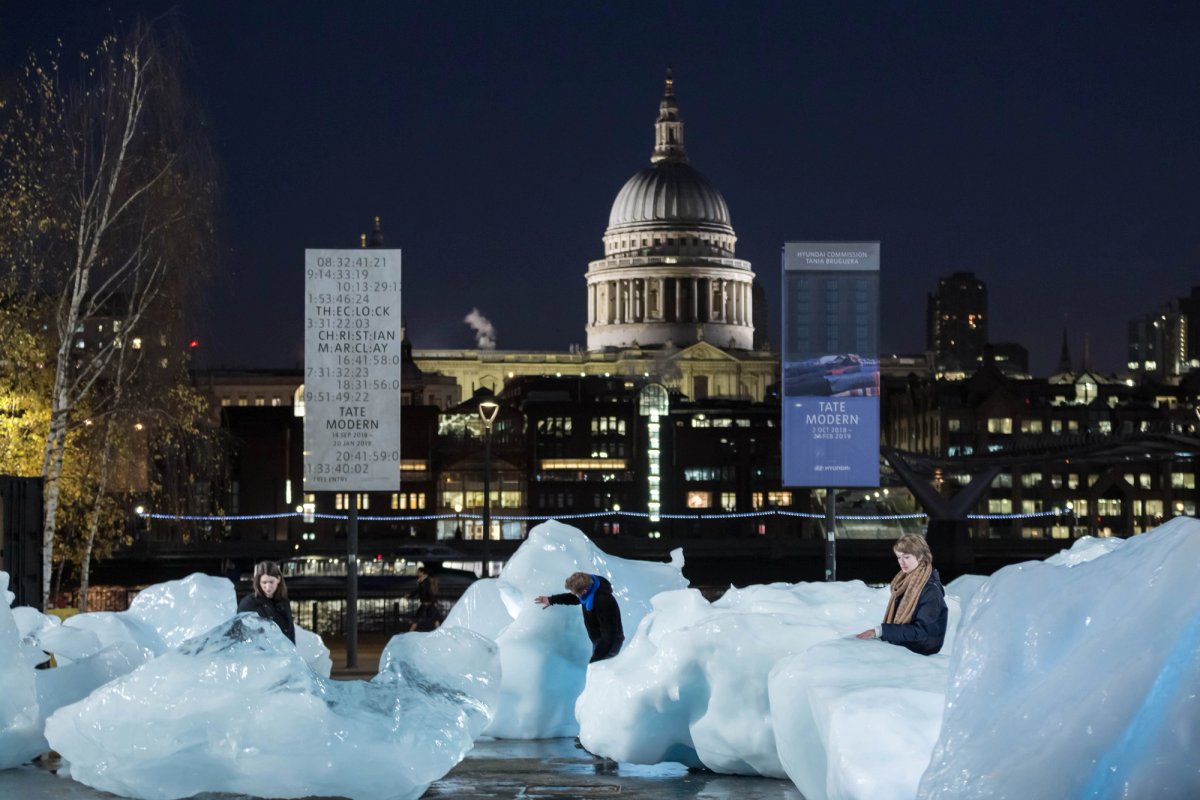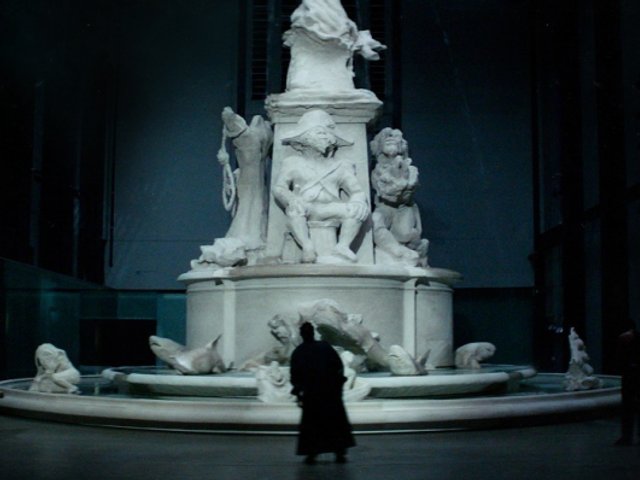Ice Watch, the climate change-themed public work by Olafur Eliasson, was unveiled at two London locations today. On Bankside, between the river Thames and Tate Modern, 24 blocks are arranged in a circular formation, while six further chunks of ice are outside Bloomberg’s HQ in the City of London. The ice was melting fast, even on a cold London morning: a metaphor for the urgency of taking action on climate change. The work’s unveiling was timed to coincide with the COP24 climate summit in Katowice, Poland, where world leaders are meeting to discuss climate change.
As Eliasson told The Art Newspaper podcast last week, Ice Watch was first installed in Copenhagen in 2014, followed by Paris in 2015, and consists of pieces of glacier that slowly melt to “make scientific data explicit, so we can feel it”. The concept, he added “is to make tangible what on earth is going on, or, in fact, what is going on with Earth.” The urgency is all the greater because of the recent report from the Intergovernmental Panel on Climate Change (IPCC), which stated that we have a 12-year window to limit the worst effects of climate change.
The blocks were responsibly taken out of the waters of the Nuup Kangerlua fjord where they had separated from the ice sheet. Minik Rosing, a professor of geology at the Natural History Museum of Denmark in Copenhagen, has worked with Eliasson on responsibly harvesting the ice blocks from the sea. “These icebergs didn’t only came here to be beautiful, they’re all carrying a story,” Rosing said at the press conference alongside Eliasson, Justine Simons, London’s deputy mayor for culture, and Michael Bloomberg, the UN special envoy for climate action and founder of Bloomberg Philanthropies, who are sponsoring the project. “If you go down and look at the 24 in front of the Tate or the six outside this building,” Rosing added, "you’ll notice they’re all individuals, they are like beings. And they whisper to you, if you put your ear to them, you can hear the bubbles pop and you can see they’re all different. And what they tell us is about a world that is different from the one that we have today. The air bubbles contain air that is fresh and clean and has half the CO2 that we have in the atmosphere today. It brings us a message of tremendous change that is happening right now.”
Rosing acknowledged that people may question the reasoning behind taking ice from Greenland’s waters—Eliasson stated that the carbon footprint for each block of ice had been calculated as being equivalent to one person travelling to Greenland. “You may wonder why did they bring them to London to melt since they are already melting fast in enough in Greenland and melt even faster in London, isn’t that irresponsible?,” Rosing said. “But the scary news is that a block of ice like the ones you see here, every second Greenland loses 10,000 blocks of ice like this into the ocean, and that water is coming up the Thames some day, it’s coming up in New York, it coming everywhere.”
Ice Watch will be visible until the ice melts, which Eliasson estimated might be as soon as the weekend.
• For the full interview with Olafur Eliasson listen to our podcast






